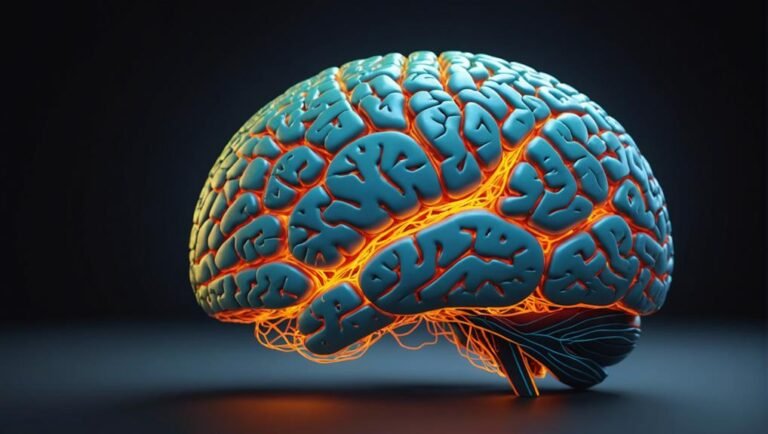How Hormones Shape Sexual Development
In this blog, we dive into the fascinating world of hormones and their pivotal role in sexual development, both in the brain and body. From the initial stages of conception to the complexities of gender identity, we explore the intricate biological processes that govern masculinization and feminization, along with the environmental factors that can influence these pathways.
Introduction to Huberman Lab Essentials
In Huberman Lab Essentials, we delve into the core principles of biology, focusing on the intricate roles hormones play in shaping sexual development. Understanding the science behind hormones not only illuminates the complexities of human biology but also provides actionable insights for mental and physical health.
Understanding Chromosomal, Gonadal, and Hormonal Sex
To grasp the nuances of sexual development, we must first differentiate between chromosomal, gonadal, and hormonal sex. Chromosomal sex is determined at conception, defined by the presence of either XX or XY chromosomes. Typically, individuals with XX chromosomes are classified as female, while those with XY are male. However, variations such as XXY or XYY can occur, leading to different biological outcomes.
Next, we have gonadal sex, which refers to the presence of either ovaries or testes. The formation of these gonads is influenced by the genetic information encoded on the chromosomes. In embryos with XY chromosomes, specific genes on the Y chromosome initiate the development of testes, which in turn produce hormones that further influence sexual development.
Finally, hormonal sex pertains to the effects of steroid hormones, primarily testosterone and estrogen, on the body. These hormones not only influence the development of primary and secondary sexual characteristics but also play a crucial role in brain organization.
The Role of Steroid Hormones in Sexual Characteristics
Steroid hormones, including testosterone and estrogen, are pivotal in dictating sexual characteristics. These hormones are lipophilic, allowing them to cross cellular membranes and interact with DNA to regulate gene expression. This capability means they can have both immediate and long-term effects on various tissues and organs.
Testosterone, for example, is essential for the development of male primary sexual characteristics, such as the penis and scrotum. However, it’s important to note that testosterone is not solely responsible for these developments. Its conversion to dihydrotestosterone (DHT) by the enzyme 5-alpha reductase is crucial for the formation of male external genitalia during embryonic development.
On the flip side, estrogen, derived from testosterone through aromatization, plays a significant role in masculinizing the brain. This complex interplay between hormones underscores the multifaceted nature of sexual development, highlighting that both testosterone and estrogen are essential in establishing sexual characteristics.
Primary and Secondary Sexual Characteristics Explained
Primary sexual characteristics are those present at birth and are directly related to the reproductive organs. In males, the presence of a penis and scrotum signifies these characteristics, while females have a vulva and internal reproductive structures. These traits are largely determined by the presence of specific hormones during critical developmental windows.
Secondary sexual characteristics emerge during puberty and are influenced by hormonal changes. In males, testosterone drives the development of features such as increased muscle mass, facial hair, and a deeper voice. For females, estrogen promotes breast development, wider hips, and the regulation of menstrual cycles.
Understanding these distinctions is crucial, as they reveal how hormones influence our physical forms and contribute to our identities. The interplay of primary and secondary characteristics shapes not only our biology but also our social experiences and interactions.
The Masculinization of the Brain and the Role of Estrogen
One of the most intriguing aspects of sexual development is the masculinization of the brain, which is primarily mediated by estrogen rather than testosterone. Although testosterone is often associated with male traits, it is converted into estrogen within the brain, where it exerts its effects on neural development.
The presence of estrogen during critical periods of brain development influences various aspects, including behavior, cognition, and emotional regulation. This process highlights the importance of understanding how hormonal actions extend beyond physical characteristics to impact our psychological and social behaviors.
Furthermore, the effects of estrogen on brain masculinization underscore the complexity of sexual identity. It challenges the simplistic notion of gender as merely a binary construct based solely on chromosomes or external anatomy. Instead, it encourages a more nuanced view that recognizes the interplay of biology, hormones, and individual experiences in shaping who we are.
Environmental Impact: Herbicides and Hormone Effects
Environmental factors can profoundly influence hormonal levels and, consequently, sexual development. One notable example is atrazine, a widely used herbicide found in many agricultural practices. Research has demonstrated that atrazine exposure is linked to significant reproductive abnormalities in various species, including frogs, where up to 92% exhibited testicular malformations.
In humans, the implications are equally concerning. Studies indicate a decline in sperm counts over the decades; for instance, the average sperm density has dropped from 113 million per milliliter in 1940 to just 66 million in 1990. Such reductions in sperm count and quality can be traced back to environmental toxins like atrazine, which disrupt hormonal balance and affect both male and female reproductive health.
These findings underscore the critical need for awareness regarding the use of herbicides and their potential long-term effects on sexual development and fertility. As we continue to explore the impact of environmental toxins, it becomes increasingly vital to consider how our agricultural practices influence human health.
Female Sexual Development and Androgen Insensitivity Syndrome
Androgen Insensitivity Syndrome (AIS) presents a fascinating case study in sexual development. Individuals with AIS possess XY chromosomes and produce testosterone, yet their bodies do not respond to this hormone due to a mutation in the testosterone receptor. As a result, they develop phenotypically as females, despite having male chromosomal and gonadal sex.
This condition highlights the importance of hormonal signaling in sexual differentiation. The presence of testosterone alone is insufficient; the hormone must bind to its receptor to elicit any developmental changes. In AIS cases, the lack of receptor function prevents the typical masculinization processes from occurring, leading to the development of female secondary sexual characteristics.
The implications of AIS extend beyond individual cases; they challenge our understanding of gender identity and the biological underpinnings of sexual development. By examining such conditions, we can gain deeper insights into how hormones shape not only physical traits but also psychological experiences of gender.
The Effects of Cannabis on Hormonal Activity
Recent studies have shed light on the hormonal effects of cannabis, particularly its active compound, THC. Evidence suggests that cannabis use can significantly increase aromatase activity, leading to elevated levels of estrogen in the body. This hormonal shift is particularly concerning for male users, as increased estrogen can counteract the effects of testosterone and disrupt the typical development of secondary sexual characteristics.
Anecdotal reports link cannabis use among males to conditions like gynecomastia, or breast development, which further illustrates the potential for cannabis to alter hormonal balance. As marijuana becomes more widely accepted and used, particularly among adolescents, understanding its effects on hormonal systems is crucial.
Additionally, the timing of cannabis exposure during critical developmental periods—such as puberty—can have lasting impacts on hormonal regulation and sexual development. The interplay between cannabis and hormonal activity warrants further investigation, especially as societal attitudes towards the drug continue to evolve.
Alcohol Consumption and Its Effects on Estrogen Activity
Alcohol consumption, particularly during critical developmental windows like puberty, can significantly influence hormonal activity. Research indicates that certain alcoholic beverages, especially those derived from grains, can increase estrogen levels in the body. This rise in estrogen poses risks not only for males but also for females, as it can lead to hormonal imbalances that affect development and reproductive health.
Furthermore, the well-documented effects of alcohol on fetal development, such as fetal alcohol syndrome, underscore the importance of avoiding alcohol during pregnancy. The cognitive and physical malformations associated with prenatal alcohol exposure highlight the vulnerability of developing systems to external influences.
As adolescents navigate their formative years, understanding the potential hormonal effects of alcohol is critical. With many teenagers engaging in drinking, it is essential to communicate the risks associated with alcohol consumption and its potential to disrupt normal hormonal regulation during puberty.
Cell Phones and Their Potential Influence on Gonadal Health
The advent of cell phones has transformed communication, but concerns have arisen regarding their potential impact on gonadal health. While definitive evidence is still emerging, some studies suggest that prolonged exposure to cell phone emissions may adversely affect testicular and ovarian development.
Research conducted on rats revealed statistically significant defects in testicular and ovarian development when subjected to cell phone radiation. Although the mechanisms remain unclear, the implications for human health are worth considering, particularly given the ubiquitous nature of cell phone use in modern society.
While the direct effects of cell phones on human gonadal health are still being studied, it is prudent to approach their use with caution. Simple measures, such as limiting phone proximity to the body and reducing screen time, may help mitigate any potential risks associated with prolonged exposure.
Dihydrotestosterone: Beard Growth and Hair Loss
Dihydrotestosterone (DHT) plays a pivotal role in both beard growth and hair loss, illustrating the complexities of hormonal influence on our bodies. DHT is a potent androgen derived from testosterone, formed through the action of the enzyme 5-alpha reductase. This transformation is crucial in the development of male secondary sexual characteristics, including facial hair.
In males, DHT promotes the growth of facial hair, contributing to the thick, coarse texture often associated with beards. The presence of DHT binds to androgen receptors in hair follicles, stimulating the growth phase of the hair cycle. However, this same hormone can lead to hair loss in other areas, particularly the scalp. The sensitivity of hair follicles to DHT varies among individuals, which explains the differing patterns of hair loss.
Male pattern baldness, or androgenetic alopecia, is a direct consequence of DHT’s action on scalp hair follicles. Over time, DHT can shrink hair follicles, leading to thinner hair and eventually hair loss. This dual role of DHT highlights the intricate balance hormones maintain in our bodies, where they can simultaneously promote growth in one area while inhibiting it in another.
Understanding the mechanisms of DHT is essential, especially for those seeking solutions for hair loss. Treatments targeting DHT, such as finasteride, work by inhibiting the 5-alpha reductase enzyme, thereby reducing DHT levels and potentially halting hair loss. However, these treatments come with their own set of side effects, underscoring the need for careful consideration when addressing hormonal influences on hair health.
Hyenas: A Unique Case of Hormonal Influence
Hyenas present a fascinating example of how hormones can shape not only physical traits but also social structures. In spotted hyenas, females exhibit a remarkable anatomical feature: their clitorises are significantly larger than the males’ penises. This unusual characteristic is a product of elevated androgen levels, particularly androstadienedione, which contributes to the masculinization of female genitalia.
The dominance of female hyenas in their social hierarchy is mirrored in their physical traits. After a successful hunt, it is the females who feed first, followed by their young, with males eating last. This social dynamic is supported by their hormonal profiles, as higher levels of androgens in females lead to aggressive and dominant behaviors.
Female hyenas give birth through an enlarged clitoris, which can lead to a traumatic birthing process. The anatomy of their reproductive system challenges traditional notions of gender and sexual differentiation. It raises questions about the role of hormones in shaping not just biology but also social structures. This unique case of hyenas demonstrates that hormonal influences extend far beyond individual development, affecting the very fabric of social interactions.
Research into hyenas offers valuable insights into the complexities of hormonal effects, illustrating how they can drive both physical and behavioral traits. The interplay between hormones and social structures in hyenas highlights the need for a broader understanding of sexual development across species.
Recap and Key Takeaways
In exploring the intricate relationship between hormones and sexual development, several key points emerge. Hormones like testosterone and its derivative DHT are crucial in shaping physical traits, from beard growth to hair loss. The dual role of DHT exemplifies how a single hormone can have contrasting effects on different body areas.
Hyenas serve as a unique case study, showcasing the profound influence of hormones on both anatomy and social behavior. The elevated androgen levels in female hyenas lead to significant physical changes and a dominant social structure, challenging traditional gender norms.
Understanding these hormonal dynamics is essential for appreciating the complexities of sexual development. As we continue to investigate the effects of hormones, it becomes increasingly clear that they play a fundamental role in shaping not only our bodies but also our social interactions and identities. The journey through the world of hormones and their effects is ongoing, revealing the intricate connections that define our biological and social experiences.







